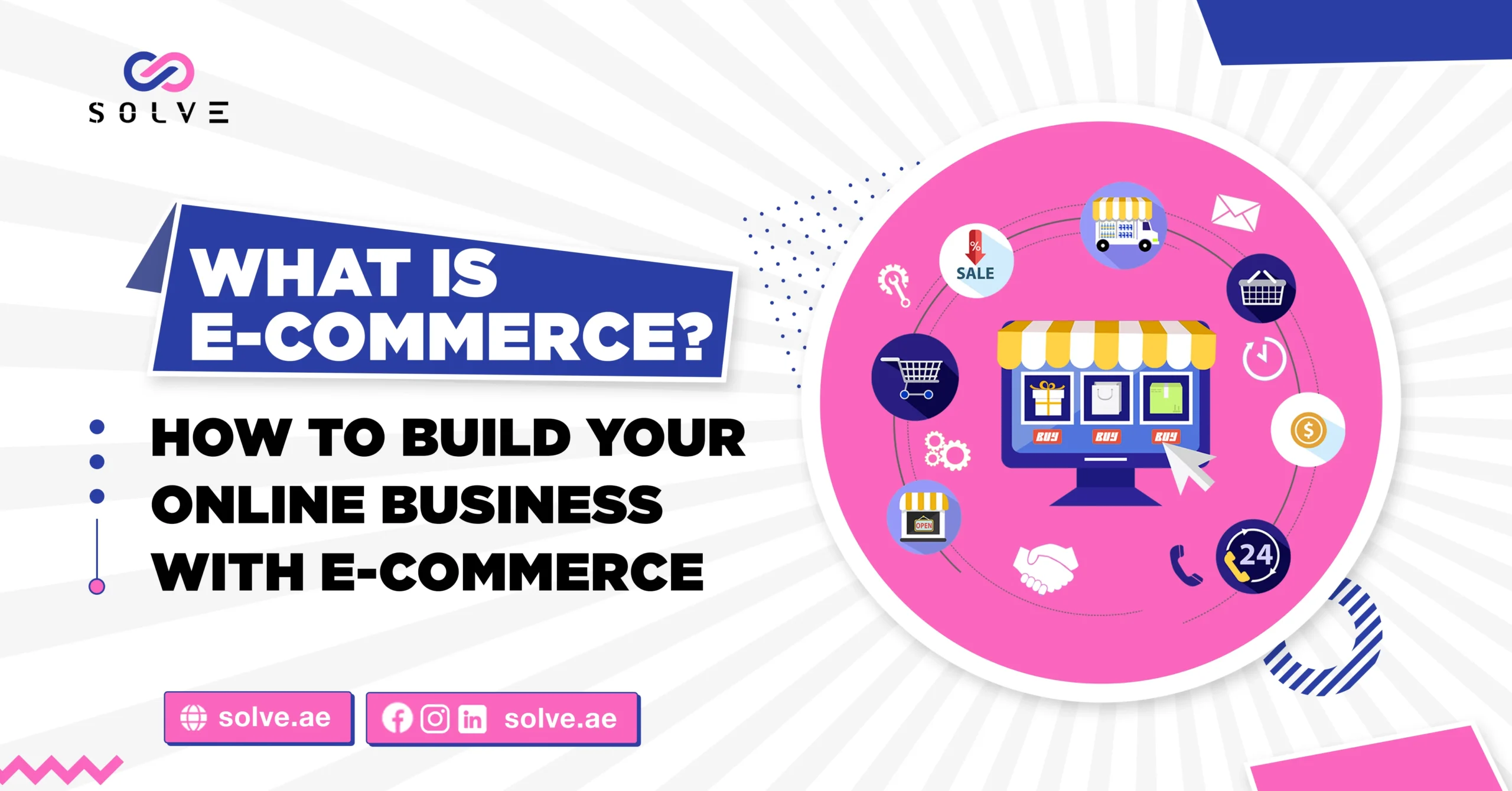- By Vanshika Choudhary
- April 10, 2025
Electronic commerce, e-commerce, stands for the extensive commercial transaction conducted through the internet, which is considered as the buying and selling of services and goods, including retail, subscription packages, and digital downloads along with crowdfunding. This can be done over various avenues such as websites, mobile apps, social media accounts, and online marketplaces, making it an inevitable part of modern commerce. This transformation enables businesses to reach and operate more effectively within a global audience. As technology progresses, so does e-commerce, enhancing wider avenues for innovation by budding entrepreneurs and providing a better scope for them to expand their clientele.
Understanding E-commerce
It is not only an online shop or virtual shop; rather it is a complete system having different types of transaction models. These models help the enterprise itself to shape into various needs of the market and provide preference to customers. For example, Business takes place in the form of both business-to-business (B2B) and business-to-consumer (B2C) transaction modes, wherein a company is able to address various customers. It empowers a person to sell his products to another without going in for B2C logical lines where C2C business activities work perfectly within eBay to consume through exchange.
Important Features of E-commerce
Convenience: Shopping 24/7 with access to fast internet everywhere really shows how much time can be saved by busy lifestyles freed from the building. Time and resources wasted traveling are reduced to an even greater extent thanks to this global virtual marketplace, which also possesses an extended wish list, reminders, and similar features that improve the shopping experience.
World Reach: Develop Business Interaction From Anywhere in the World. Geography has been shattered for businesses in which customers can now buy, regardless of where they are located. The goal of any international business is to explore new markets, diversify its clientele, and reduce dependence on local sales. While companies can target different countries with the right marketing strategies, most economies now have the opportunity to reach their consumers.
Low Cost: Starting an e-commerce business does not involve that much capital compared to starting a traditional business with a physical store since there is no rent or utility cost associated with the business. Most e-commerce platforms are also less expensive in prices for templates and tools that would aid in facilitating rapid business launches by entrepreneurs; reduced overhead equips more resources for marketing and product development.
Different Models: In e-commerce, there are numerous transaction models for businesses. Such flexibility allows entrepreneurs to adapt to different market needs. For example, it may be B2B, B2C, C2C, and even customer-to-business-an e-commerce platform can accommodate all these different models.
Benefits of E-commerce for Entrepreneurs
The benefits of e-commerce are many for entrepreneurs when they consider business growth and expansion:
Accessibility. Platforms such as Shopify or Etsy allow one to set up a store with little investment. These platforms provide their members with user-friendly templates and tools, as well as payment gateway and shipping service integration for seamless setup. E-commerce platforms often have inbuilt analytic tools that enable them to monitor turnover very well from whatever data they generate.
Scalability. It allows all online businesses to leverage fast-growing demand using several digital tools and marketing strategies. It includes elements such as automated inventory management and order fulfillment in e-commerce, enabling clients to expand their businesses without significant increases in overhead costs.
Data insight: Insights analyzed from analytics tools about customers enable businesses to market very specifically to their target market. By examining customer interaction data, the business can see trends and preferences, which it can use to mold its offerings to satisfy customers’ needs and improve customer satisfaction and loyalty.
Automation: Functions that could be automated include payment processing, inventory management, and shipment logistics while relying less on manual labor and enabling companies to become more efficient. Also, errors are reduced and deliveries are timely, thus improving the overall satisfaction of the customer. Moreover, automated systems allow businesses to focus on strategic growth rather than day-to-day operations.
How to Build Your Business Online with E-commerce
Creating an online business involves planning and execution. Here is the stepwise guide:
Step 1: Choose Your E-commerce Niche
Look for a niche that would be aligned with your interests and expertise. Doing Trend Research and customer’ demand would help you to validate potential product or service markets. Use Google Trends to see what customers are searching for on social media. Find out which niche has less competition but still a large amount of client base and perhaps go along with it. This way you will have a more precise way to distance your business from another one and gain a loyal customer segment.
Step 2: Choose an E-commerce Platform
Choose the best e-commerce platform according to your requirements:
Shopify: Best for selling physical products. It has some great customizable templates to offer and integration options with several shipping providers. Supports various payment gateways, making transaction management a breeze. Shopify’s app store is also full of integrations with other third-party services.
Wix or Squarespace: For businesses based on services, the best presentation is offered and simplest integration into appointment scheduling. These platforms are easy for users, offering drag & drop editors to create websites looking professional without knowledge of the coding industry.
Using Amazon or eBay is an appropriate platform for marketplace-based selling, so you can leverage their existing customers. In such a way toward reducing the operational burden for a seller, these platforms will take care of logistics and customer service.
Step 3: Register Your Domain name—
www.yourbusiness.com. Its domain name is found in your website address. Select a name that resonates with the identity of your brand name and one that is easy to remember. Register your domain through GoDaddy or Bluehost, as they offer this service and usually with some web-hosting options. It is also advisable that your domain name be available in all social media channels, as this enhances your recognition as a brand and it becomes easy for people to discover you online.
Step 4: Create Your Website
To make a great website, use the templates provided by the e-commerce platforms. Essential pages include:
Home Page: Showcase your products/services with high-quality images and compelling descriptions. Highlight any promotions or new arrivals to capture visitor attention.
About Us: Let them know your story and your values to build their trust. This page should reflect your brand personality and mission.
Product Listings: Consider adding detailed descriptions with reviews by customers and showing multiple images with filters and categories for easy navigation.
Customer Service Page: Include all the contact details, return policies, and FAQs here to make things clear. Include shipping times and costs on this page as well.
Step 5: Payment Processing Setup
You probably are aware that there are many types of payment-processing gateways like PayPal, Stripe, or Square through which sellers can receive autonomous transactions with customers. Compliance with tax regulations could also be ensured through automated tax collection. It is also advisable to consider a multitude of payment options, as some customers may prefer the conventional credit/debt card method, whereas some customers seem to rely more on digital wallets, such as Apple Pay. Moreover, as there are numerous payment options, for any case, anyone can increase conversion rates.
Step 6: Optimize for Mobile
Many customers use mobile phones to shop, so your website must be easily mobile-accessible. Use responsive designs of templates that can adjust on different screen sizes and according to all functions and features that work smoothly on mobile devices. Mobile Optimization is essential to improve user experience and reduce bounce rates, and the search engine ranks Google in favor of mobile-friendly sites, which can improve your SEO. check out our latest blog post on How RFID Asset Tracking Transforms Healthcare Operations
Step 7: Implement Marketing Strategies
Another way to drive traffic via digital marketing tools is:.
Social Media Advertising: Advertising through such social media as Instagram or Facebook with the target users by user demographics and interest.
Search Engine Optimization (SEO): Improve visibility for Google with relevant keywords and meta tags on your website. Update these regularly; otherwise, your website will lose its ranking in search engines.
Email Marketing Campaigns: Customers can often be reached through email, with personalized promotions and updates geared toward keeping them loyal. With an email marketing automation process, this becomes easier to implement and track audience engagement with these campaigns.
Step 8: Inventory and Shipping Management
Partner with respected shipping businesses to deliver products right to the customers’ doors and on time. Free shipping or order-based discounts can be great incentives to place an order. It’s also important to publish clear shipping information on your website so that customers can have realistic expectations, which would minimize their inquiries.
How to Grow Your Online Business
Elevated Customer Experience:
Smooth customer experience builds the trust factor for your business. Fast shipping, timely delivery, and hassle-free returns are core drivers for that trust.
Provide timely support to customers on answering their queries, via website chatbots or through emails. Train your support staff to present your brand in the best light with genuinely positive interventions, putting the customer first to maintain their repeat patronage.
Use Analytics Tools to Increase Sales:
Gather data regarding website traffic and sales performance using Google Analytics or similar tools. It becomes possible to analyze trends/reveal areas where there is room for improvement.
Put in place mechanisms to track conversion on whatever marketing campaign you would need to test on-site, creating studies that help you articulate areas to concentrate on while allocating your marketing resources.
Broaden Product Offerings:
Explore the possibility of adding products and services based on customer feedback or market trends. Market research will reveal areas of deficiency in your present offering and opportunities for expansion from it.
Consider selling these in bundles or packages incorporating complementary products to enhance the average order value.
Engagement with the Customers:
Have interaction through social media and targeted emails. Timely responses to customer comments and messages will show that their feedback is valued by you.
Encourage your customers to write reviews and testimonials to support your credibility. Positive reviews can become a significant trust factor for potential customers.
Invest in Branding:
Create a great logo and keep it consistent visually. Tie these branding efforts together to imprint the acceptance of your values on your target audience.
Throughout any communication, from website content to social media updates, your brand voice should shine through. Unification in voice will allow even greater recognition and loyalty for your brand.
The Conclusion
With the right strategies, the niche focus, technology use, and customer satisfaction focus earn you a decent amount with an e-commerce business that delivers products and services to customers all over the world. The possibilities are infinite-whether selling handmade crafts or rendering professional services.
Just start now by selecting the right platform and laying down your first bricks toward the building of your cherished online business! contact us As you explore the e-commerce sector, remain flexible and hone in on the changing customer responses and market trends. Keep yourself updated about the new e-commerce tools and trends; this is where it will keep you right ahead of the competition.




